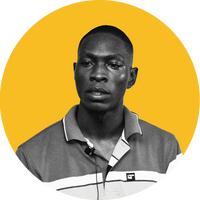
- Ethereum developers have launched the Holesky testnet.
- Holesky will replace Goerli as the main testnet for protocol-level changes.
- Find out how Holesky trumps its predecessor.
Ethereum is the most used blockchain in the world primarily due to its pioneering smart contract capabilities, making it a popular venue for Web3 and decentralized application (DApp) development.
As the demand for the network continues to grow, so does the complexity of upgrades required to meet this demand, creating the need for robust testing environments. In response to this need, on Thursday, September 28, developers launched a new test network (testnet) for Ethereum called Holesky to allow for more rigorous testing of network upgrades.
Sponsored
With Holesky set to replace Goerli as the largest Ethereum testnet, we discuss what Holesky is and how it improves on its predecessor.
What Is Ethereum’s Holesky?
Holesky is a network designed to serve as a sandbox for future Ethereum upgrades, specifically as regards the network’s staking infrastructure and other protocol-level iterations.
Developers named the latest Ethereum testnet after the Holešovice train station, which is viewed as the second most important railway station in Prague, known for its proximity to the famous Holešovice market, art galleries, and the Vltava, the longest river in the Czech Republic.
Holesky is the first Ethereum testnet to ship merged and is compatible with the Shapella upgrade. The testnet is billed to replace Goerli as the main Ethereum sandbox for protocol-level changes.
How Is Holesky Better Than Goerli?
Launched in 2019, Goerli has been the main Ethereum testnet for infrastructure and core protocol upgrades for the past four years. However, as more developers piled in and upgrade complexities surged, failings of the testnet became obvious. Most notably, the capped supply of Goerli ETH (goETH), tokens used to pay for gas on the testnet.
Sponsored
Initially designed to be free and obtained through faucets, goETH scarcity led to the creation of a market where developers looking to test changes are forced to pay to secure these tokens to test out changes, increasing development costs. Additionally, developers worried that the smaller validator set on Goerli (512,000) compared to the Ethereum mainnet (700,000) could allow for scaling issues to arise on the mainnet first.
Addressing the failings of Goerli, Holesky comes out of the box with a significantly larger testnet token supply and validator set. Specifically, Holesky boasts a 1.6 billion testnet token supply and a validator size of 1.4 million. For comparison, that is twice as many validators as the mainnet.
The latest testnet will play a key role in preparations for Dencun, Ethereum’s next major upgrade, which will introduce the long-anticipated proto-danksharding that will reduce costs for users of Layer 2 networks. Developers believe Holesky can serve as the main Ethereum testnet for three to five years.
On the Flipside
- The initial Holesky launch failed on September 15, forcing developers to return to the drawing board.
- Goerli will continue to run till early 2024.
- Sepolia remains the Ethereum sandbox for testing DApps, smart contracts, and EVM functionality.
Why This Matters
Ethereum’s growing demand and complexity require that developers have robust testing environments to try out upgrades before launching on the mainnet. The launch of Holesky promises to meet this demand for at least the next three years.
Read this to learn more about testnets and their usefulness in crypto:
Testnets in Crypto: How To Use Test Networks to Earn Cryptocurrency
Find out what Ethereum blobs are and their role in scaling the network:
What Are Ethereum Blobs, and How Do They Boost Scalability?

